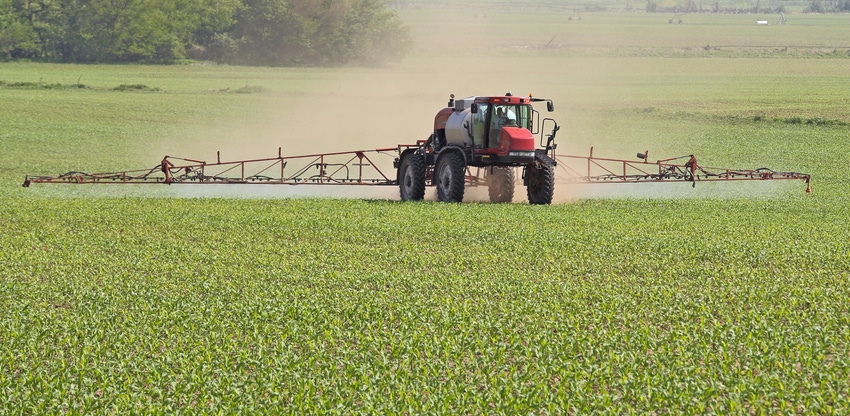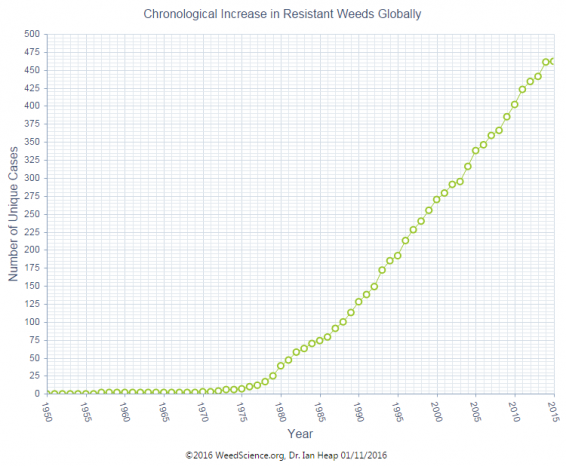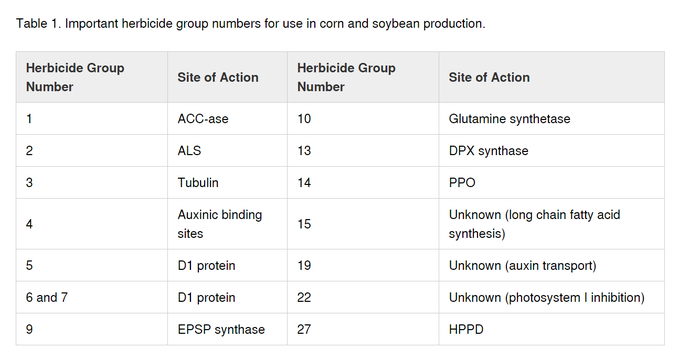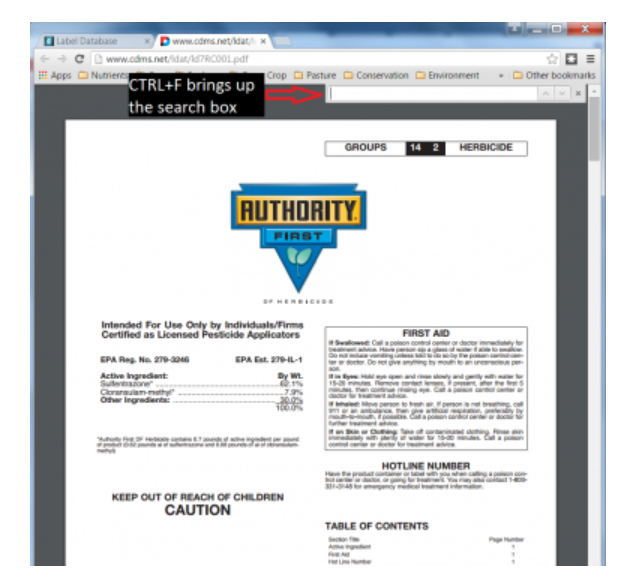November 28, 2018

Source: Iowa State University
By Meaghan Anderson and Bob Hartzler
This is part one of a four-part series originally posted in 2016 on using multiple, effective herbicide sites of action (herbicide groups) at effective rates as part of a long-term weed management system.
With the stagnant development of new herbicides and weeds seemingly evolving herbicide resistance faster than ever before, it's important to maximize the usefulness of every herbicide application. A new herbicide site of action (or herbicide group number) for use in corn and soybean production has not been discovered since the early 1980s. According to Dr. Ian Heap with www.weedscience.org, since the 1980s, the confirmed number of unique cases of herbicide resistance globally is increasing at a rate of about 12 discoveries per year.

To delay resistance problems as long as possible and assure our herbicides retain their value, we must 1) use multiple herbicide sites of action that target our problem weeds. This is more complicated than simply designing a program with multiple sites of action. We must also 2) assure the different sites of action are effective against the problem weeds we are fighting, and 3) make sure the herbicides are used at effective rates and applied at the right time to provide maximum control. Finally, we must realize that herbicides put significant selection pressure on our weed populations, making herbicide resistance development an inevitable outcome of using herbicides. Thus, 4) a more diverse system of fighting weeds is necessary for long-term success, including non-herbicidal options as much as possible.
The first step in planning a herbicide program and battling herbicide resistance is to make sure your program includes multiple sites of action or what we will refer to as herbicide groups. The herbicide site of action is the specific molecule that the herbicide binds to; this binding disrupts a biological process (the mode of action) and results in the death or injury of the plant. The site of action is a specific subset of the herbicide mode of action. The mode of action is the biological process that is affected by the herbicide, e.g. photosynthesis, amino acid synthesis. Important herbicide sites of action and their corresponding herbicide group numbers are listed below (Table 1).

Herbicide groups are a relatively new way of determining the site of action of the myriad herbicides on the market. Each site of action has been assigned a number, and most herbicide labels prominently display this group number on the product label. If a product includes two different sites of action, the label will have two different group numbers listed. Keeping track of the herbicide group numbers is the simplest way for farmers to keep track of the different sites of action they’re using in their herbicide program.
If you don’t have your herbicide labels on hand, one handy website to look up pesticide labels is www.cdms.net. After clicking on the label database section as shown below, I can look up the product by brand (trade) name or manufacturer. When I find the product I was looking for, I can click on the link called ‘specimen label’ to bring up the product label.

I am able to pull up a PDF copy of the label, and I can even use the CTRL+F function to bring up a search bar and find a particular word or phrase I’d like to find.

Note the herbicide group numbers listed on the first page of the Authority First herbicide label. Most, but not all, herbicide labels will display the group numbers in this way.
Here are some additional excellent resources to find additional information needed to develop effective herbicide programs.
Download the most recent Herbicide Guide for Iowa Corn and Soybean Production to look up herbicide group numbers for products with only one active ingredient or group numbers for premixes with multiple herbicide group numbers.
Use the Take Action on Weeds herbicide site of action chart, if you’d prefer to see everything grouped on one page. You can print it for your office as well!
The Take Action on Weeds website also includes a page for looking up herbicide group numbers by either trade name or active ingredient. If you know your herbicide trade name, just type it in to find the group numbers that product contains!
So, how well are you fighting off herbicide resistance?
Originally posted by Iowa State University.
You May Also Like




